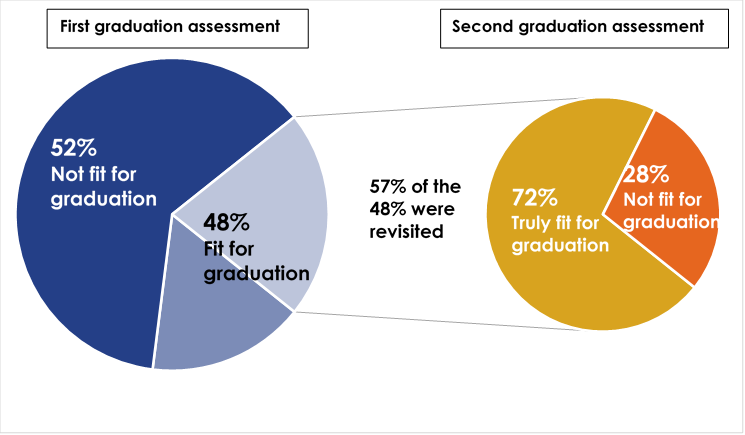Active Versus Graduated Beneficiaries of an Orphans and Vulnerable Children Program in Uganda
PEPFAR orphan and vulnerable children (OVC) programs mitigate the impact of HIV on children and their families by providing, and linking them to, health and socioeconomic interventions to build resiliency and stability. Children and caregivers graduate from OVC programs when they are deemed stable and are no longer in need of external support services. Though programs conduct regular case management of supported households, the indicator vulnerable children served, which links closely to the corresponding PEPFAR indicator (OVC_SERV), requires more robust assessments to determine whether households are fit to graduate from program services. Programs define the criteria of graduation, but these criteria may require validation before support is discontinued, as staff of one OVC program in Uganda discovered.
The Sustainable Outcomes for Children and Youth in Central and Western Uganda (SOCY) project—which is implemented by Catholic Relief Services, in partnership with Palladium, Action for Community Development, TPO Uganda, the Center for Creative Leadership, Living Goods, and the Institute for Reproductive Health at the University of Georgetown—works to improve the health, nutrition, education, and psychosocial wellbeing of vulnerable populations. The project currently supports about 130,000 beneficiaries or 23,000 households across 15 districts in Central and Southwestern Uganda, identified as key districts of the HIV epidemic in Uganda.
When the project started, staff assessed beneficiaries to understand their needs and vulnerabilities and craft appropriate solutions for them. Roughly two years into implementation, SOCY conducted a follow-up assessment with the registered households and determined that 48 percent of the 23,437 total beneficiaries met the criteria to graduate from the program.
Staff questioned the magnitude of this result and wanted to examine the findings before moving forward and discontinuing support to these beneficiaries. They decided to deploy social workers to conduct a more detailed assessment of roughly 6,000 of the 11,000 households supposedly fit to graduate (57 percent of the original 48 percent). Results from the second assessment showed that 28 percent of those who initially met graduation criteria were actually unprepared to graduate and needed one to two additional services (graph). Some of these households had recently begun businesses and needed oversight and support to ensure financial success and sustainability.
With the data from the second assessment and follow-up, the project has been able to graduate truly eligible households. The project forecasts that the 28 percent of households would require support for another quarter.

Please click here to access the indicator definition for vulnerable children served.












